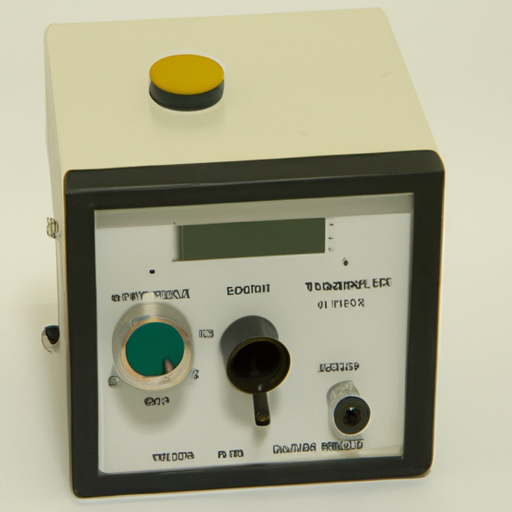Rotating potential meters, also known as potentiometers, are widely used in various electronic devices to measure and control voltage levels. These devices are essential components in many applications, including audio equipment, industrial machinery, and automotive systems. As technology continues to advance, the demand for high-quality rotating potential meters with advanced features is increasing. In this article, we will discuss the latest specifications of rotating potential meters and how they are meeting the evolving needs of the industry.

Another important specification of rotating potential meters is their accuracy. The accuracy of a potentiometer refers to how closely it can measure or control voltage levels compared to the actual value. With advancements in technology, manufacturers have been able to improve the accuracy of rotating potential meters significantly. Many modern potentiometers now offer accuracy levels of up to 0.1%, ensuring precise voltage control in even the most demanding applications.
In addition to resistance range and accuracy, the resolution of rotating potential meters is another crucial specification to consider. Resolution refers to the smallest change in voltage that a potentiometer can detect or control. Higher resolution potentiometers allow for more precise voltage adjustments, making them ideal for applications that require fine-tuning of voltage levels. Manufacturers have been developing rotating potential meters with resolutions as high as 0.01 volts, enabling users to make precise adjustments with ease.
Durability is also a key consideration when it comes to rotating potential meter specifications. These devices are often subjected to harsh operating conditions, including temperature extremes, vibration, and moisture. To ensure reliable performance in these environments, manufacturers are incorporating rugged designs and high-quality materials into their rotating potential meters. Many modern potentiometers are now built to withstand temperatures ranging from -40°C to 85°C and are sealed to protect against dust and moisture ingress.
Another important specification of rotating potential meters is their lifespan. The lifespan of a potentiometer refers to how long it can maintain its performance over time. With the increasing demand for reliable and long-lasting electronic components, manufacturers are focusing on developing rotating potential meters with extended lifespans. Many modern potentiometers now offer a lifespan of up to 1 million cycles, ensuring years of reliable operation in various applications.
In conclusion, the latest rotating potential meters on the market are designed to meet the evolving needs of the industry by offering wider resistance ranges, higher accuracy, improved resolution, durability, and extended lifespans. These advanced specifications make modern potentiometers ideal for a wide range of applications, from audio equipment to industrial machinery. As technology continues to advance, we can expect to see even more innovative features and capabilities in rotating potential meters, further enhancing their performance and versatility.
Rotating potential meters, also known as potentiometers, are widely used in various electronic devices to measure and control voltage levels. These devices are essential components in many applications, including audio equipment, industrial machinery, and automotive systems. As technology continues to advance, the demand for high-quality rotating potential meters with advanced features is increasing. In this article, we will discuss the latest specifications of rotating potential meters and how they are meeting the evolving needs of the industry.

Another important specification of rotating potential meters is their accuracy. The accuracy of a potentiometer refers to how closely it can measure or control voltage levels compared to the actual value. With advancements in technology, manufacturers have been able to improve the accuracy of rotating potential meters significantly. Many modern potentiometers now offer accuracy levels of up to 0.1%, ensuring precise voltage control in even the most demanding applications.
In addition to resistance range and accuracy, the resolution of rotating potential meters is another crucial specification to consider. Resolution refers to the smallest change in voltage that a potentiometer can detect or control. Higher resolution potentiometers allow for more precise voltage adjustments, making them ideal for applications that require fine-tuning of voltage levels. Manufacturers have been developing rotating potential meters with resolutions as high as 0.01 volts, enabling users to make precise adjustments with ease.
Durability is also a key consideration when it comes to rotating potential meter specifications. These devices are often subjected to harsh operating conditions, including temperature extremes, vibration, and moisture. To ensure reliable performance in these environments, manufacturers are incorporating rugged designs and high-quality materials into their rotating potential meters. Many modern potentiometers are now built to withstand temperatures ranging from -40°C to 85°C and are sealed to protect against dust and moisture ingress.
Another important specification of rotating potential meters is their lifespan. The lifespan of a potentiometer refers to how long it can maintain its performance over time. With the increasing demand for reliable and long-lasting electronic components, manufacturers are focusing on developing rotating potential meters with extended lifespans. Many modern potentiometers now offer a lifespan of up to 1 million cycles, ensuring years of reliable operation in various applications.
In conclusion, the latest rotating potential meters on the market are designed to meet the evolving needs of the industry by offering wider resistance ranges, higher accuracy, improved resolution, durability, and extended lifespans. These advanced specifications make modern potentiometers ideal for a wide range of applications, from audio equipment to industrial machinery. As technology continues to advance, we can expect to see even more innovative features and capabilities in rotating potential meters, further enhancing their performance and versatility.